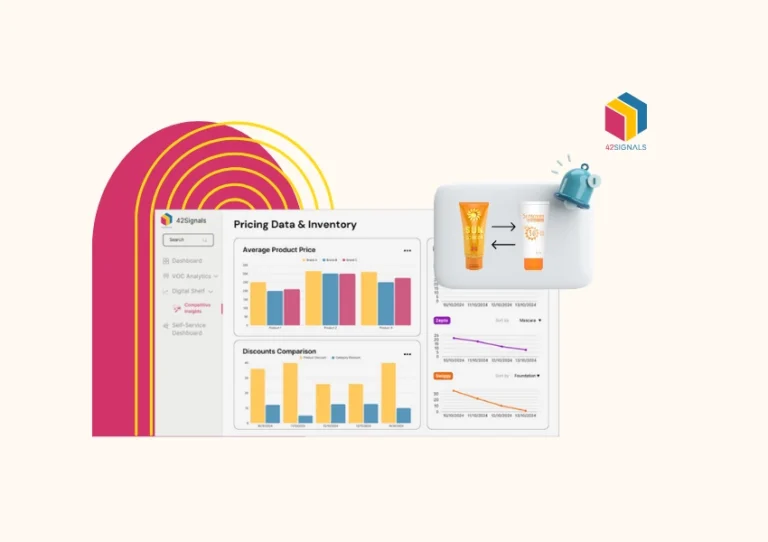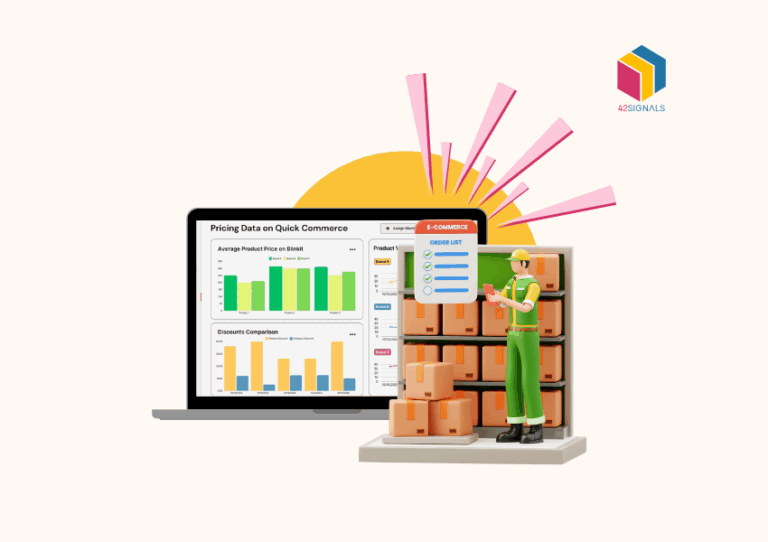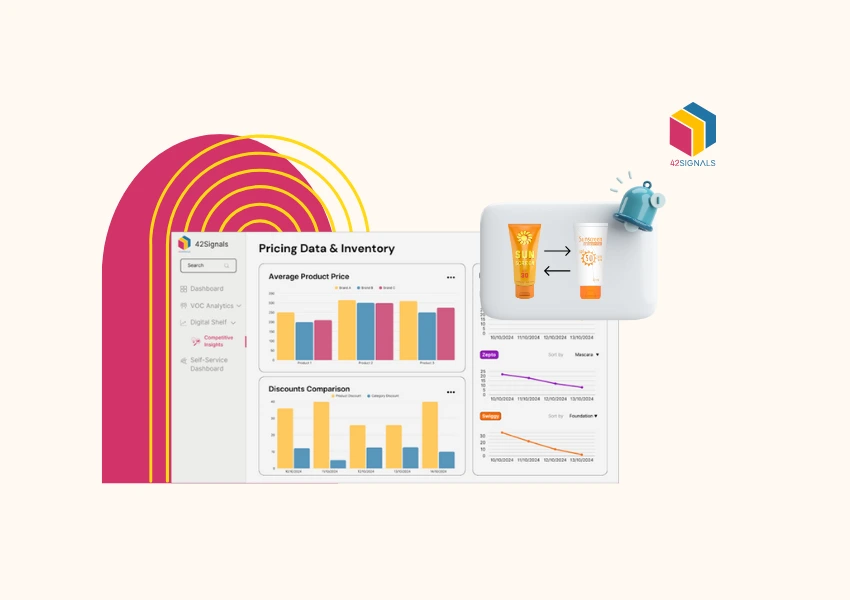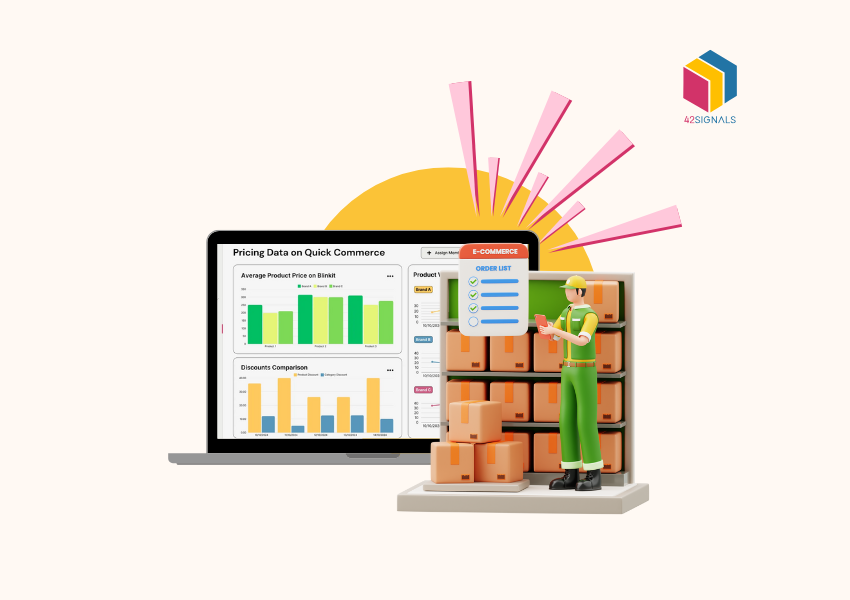Introduction to Digital Shelf Analytics Providers
With the fast-paced growth in e-commerce, the “digital shelf” has become an extremely critical battleground for e-commerce and digital brands – who are looking to capture the attention of online shoppers. The challenge seems to catapult with an increasing number of products available online, making it imperative for brands to stand out and effectively manage their presence on digital shelves. Here, choosing the right digital shelf analytics providers becomes crucial. More on that in a bit.
Driving this is “Digital shelf analytics” – which involves the process of collecting and analyzing data related to a brand’s online presence, including product listings, pricing, availability, and customer reviews. This data, when leveraged, helps online brands gain valuable insights into their market position, make data-driven decisions, and optimize their digital shelf strategies.

However, not all digital shelf analytics providers are created equal. To ensure the effectiveness of digital shelf analytics, it is essential to partner with a provider that offers the right set of features.
In this article, we will explore the must-have features to look for in an effective digital shelf analytics provider.
Benefits of Digital Shelf Analytics
Before diving into the key features, let’s briefly discuss the benefits of implementing digital shelf analytics for brands:

Image Source: Seller App
1. Improved Brand Visibility
Digital shelf analytics allows brands to monitor the visibility and discoverability of their products online. By understanding how their products appear on various platforms and search results, brands can optimize their content and improve their chances of being found by potential customers.
2. Competitive Intelligence
Digital shelf analytics provides brands with valuable competitive insights. By analyzing their competitors’ product listings, pricing strategies, and customer reviews, brands can identify gaps in the market and adjust their strategies accordingly.
3. Optimized Pricing and Promotions
Digital shelf analytics enables brands to monitor and analyze pricing trends across different online retailers. By identifying pricing inconsistencies and opportunities, brands can implement dynamic pricing strategies and optimize promotional campaigns to maximize sales and revenue. They can also update retail strategies based on this data to improve sales.
4. Enhanced Customer Experience
Through digital shelf analytics, brands gain a deeper understanding of their customers’ preferences and pain points. Leveraging this knowledge, brands get to tailor their product offerings, improve customer satisfaction, and drive brand loyalty.
Now that we have established the benefits, let’s explore the key features to look for in an effective digital shelf analytics provider.
Key Features to Look for in a Digital Shelf Analytics Provider
When selecting a digital shelf analytics provider, consider the following key features:
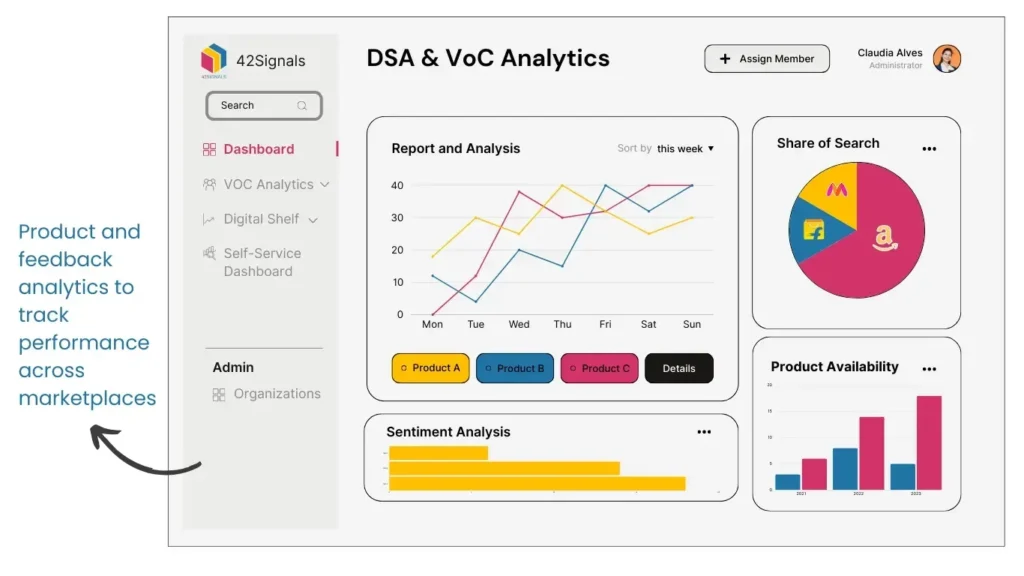
1. Real-time Data Monitoring
The provider should offer real-time data monitoring capabilities to ensure that brands can access up-to-date insights and respond promptly to market changes.
2. Comprehensive Product Tracking
The provider should offer comprehensive tracking of product listings across different online platforms, including e-commerce websites and marketplaces. This should include monitoring product titles, descriptions, images, and attributes.
3. Price Tracking and Optimization
The provider should offer robust price tracking and optimization features. This includes monitoring competitor pricing, MAP (Minimum Advertised Price) compliance, and the ability to set dynamic pricing rules.
4. Reviews and Sentiment Analysis
The provider should offer sentiment analysis tools to analyze customer reviews and extract valuable insights. This includes monitoring overall review ratings, identifying emerging trends, and assessing customer sentiment toward specific product features.
5. Content Optimization
The provider should offer content optimization tools to help brands improve their product listings. This includes keyword analysis, recommendations for optimizing product titles and descriptions, and content performance metrics.
6. Competitive Intelligence
The provider should offer comprehensive competitive intelligence features. This includes benchmarking against competitors, analyzing their product assortment and pricing strategies, and identifying market opportunities.
7. User-friendly Dashboard and Reporting
The provider should offer a user-friendly, intuitive dashboard that allows brands to easily navigate and access key performance metrics. Additionally, comprehensive reporting features should be available to generate detailed insights and track progress over time.
Now that we have covered the essential features, let’s examine some examples of how successful implementations of digital shelf analytics look.
Examples of Successful Implementations
Example 1: Company X – Driving Sales with Real-time Pricing Optimization
Company X, a leading consumer electronics brand, partnered with a digital shelf analytics provider to optimize their pricing strategy. By leveraging the provider’s real-time price tracking and optimization features, Company X was able to monitor competitor pricing and adjust their prices dynamically.
The implementation resulted in a significant increase in sales, as Company X was able to identify pricing gaps and offer more competitive prices. Additionally, the provider’s dynamic pricing rules enabled Company X to automatically adjust prices based on market conditions, ensuring maximum profitability and customer satisfaction.
Example 2: Company Y – Enhancing Content Performance with Data-driven Optimization
Company Y, a cosmetics brand, struggled with low conversion rates and poor visibility on online platforms. They partnered with a digital shelf analytics provider that offered comprehensive content optimization tools.
By analyzing competitor product listings and leveraging the provider’s keyword analysis and recommendations, Company Y was able to improve its product titles and descriptions to better align with customer search queries. The brand also utilized content performance metrics to iteratively improve its content over time.
As a result, Company Y experienced a significant boost in product visibility, higher conversion rates, and improved customer engagement. The data-driven content optimization strategies enabled them to better meet customer expectations and drive sales.
Conclusion on Choosing the Right Digital Shelf Analytics Providers
Digital shelf analytics has become a crucial tool for brands to succeed in the competitive e-commerce landscape. By partnering with effective digital shelf analytics providers, brands can gain valuable insights, optimize their strategies, and drive growth.
When selecting a digital shelf analytics provider, ensure they offer features such as real-time data monitoring, comprehensive product tracking, price tracking and optimization, sentiment analysis, content optimization, competitive intelligence, and a user-friendly dashboard like 42Signals does.
To know more about how 42Signals can be a great partner for your business, visit our pricing page to learn more.

